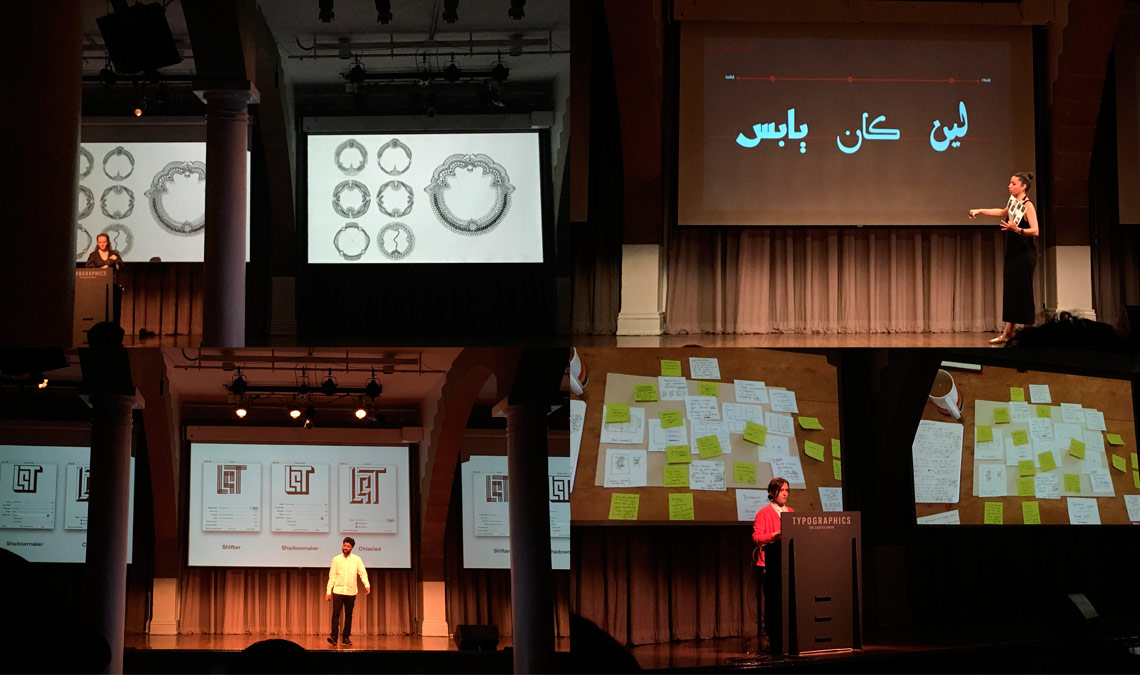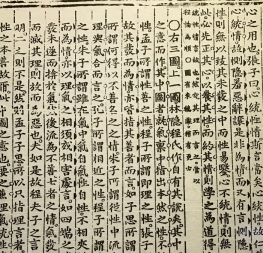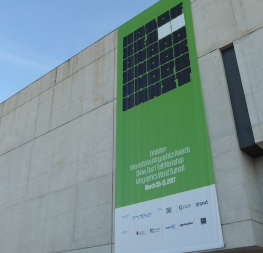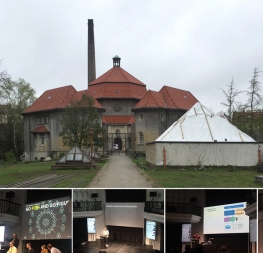The two-day main conference was held in the old Cooper Union building. The conference structure was ideal: a 30-minute talk followed by a panel that answered questions at the end of each session. Before the breaks, the ‘spotlights’, a five-minute talk from selected designers, were like entertaining treats between talks. A big shout-out to Stephen Coles for his short but enlightening talk about using the ‘Metrics Kerning’ option rather than ‘Optical’ in InDesign. He emphasized that designers should not choose ‘Optical’ since it overrides the type designers’ built-in professional kerning, something all designers need to know.
The speaker lineup was a stimulating mixture of graphic designers and type designers, from talented ones I have admired for years to those whose work was new to me.
Type designers Shiva Nallaperumal and Jonathan Hoefler each presented their latest releases: Calcula and Inkwell, respectively. Agnieszka Gasparska’s talk echoed Hoefler’s about the state of handwriting. Kris Sowersby spoke about his latest releases too, Untitled Sans and Serif, but unfortunately my English skills weren’t good enough to understand over his accent. Happily for me it was recorded so I can watch it again. Ilya Ruderman gave a presentation about Type Today and gave his point of view on the contemporary state of typeface design. Questioning design was part of Silas Munro and Marlene McCarty’s talks.
I really enjoyed the graphic design talks. Natasha Jen (Pentagram) presented a selection of her works, of which I really appreciated the insights on the Teabox identity project. Astrid Stavro (Atlas) presented her work, which I thought was fantastic, but I would have appreciated a bit more insights and depth about the projects shown. I am not a huge fan of portfolio talks, but the works of Stefanie Weigler & David Heasty (Triboro), and of Annik Troxler were so nice that I didn’t mind. Hilary Greenbaum presented the identity of the Whitney Museum of American Art. Even though I thought the use of Neue Haas Grotesk can be questioned, it was interesting to see how the graphic system is displayed in different media.
The indie magazine panel featuring Kara Haupt, Elana Schlenker, and Ryan Essmaker was really interesting as each speaker showed that publishing personal projects helped them in their career. As no surprise, Hansje van Halem’s talk was as fantastic as her work. I really enjoyed Jonathan Key’s talk too, especially when he presented the type workshop he did with kids. On the teaching side, Lara Captan presented the typeface design program that she founded with Kristyan Sarkis, Arabic Type Design: Beirut.
Helen Yentus, art director of Riverhead Books gave a really interesting talk on book cover design. Loving reading and therefore loving books, I was really hooked by her presentation. She mentioned how book cover design evolved recently, due to the transition from the physical to the digital, and how this influenced book cover design practice. Just think of a book cover’s size on amazon.com — 1.5 inches — and how designers need to think about creating bold and legible covers. She also compared book cover design to poster design, as the goal of them is the same: create a visual moment that grabs attention instantly.
However, my favourite presentation was Ken Barber’s amazingly well-documented talk about 20th century American advertising lettering. He also talked about the most badass lady in the industry at that time, Ruth Guzik (1932–2011), who was an employee of one of the biggest lettering studios in NYC. She was incredibly skilled and could work in different styles. Ruth didn’t just do her own impeccable work, she also refined other designer’s lettering. In the ’50s, she had the courage to complain about not being paid the same as her male colleagues for the same work. For that reason she quit her job, but was quickly called back by the company. Not only did they rehire her, but they gave her a bigger salary because they couldn’t afford to lose her. Ruth is definitely my new hero!






